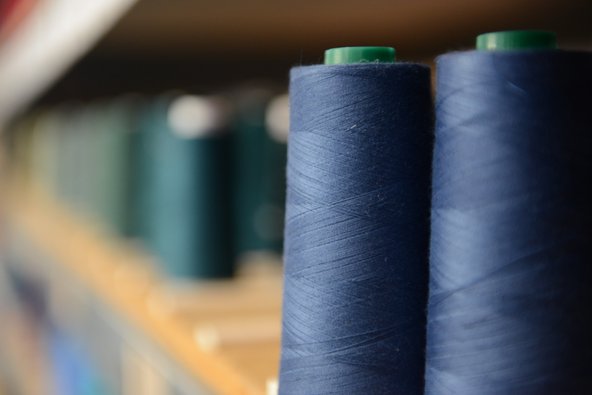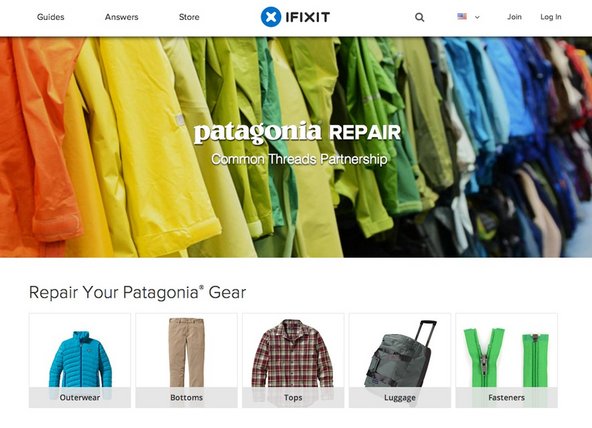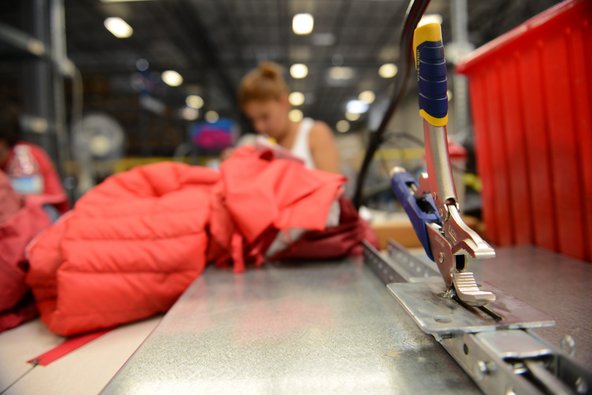In a Reno warehouse, Patagonia team members sort through boxes of garments. Weather-beaten windbreakers, jackets with melted zippers, and ripped pants are placed in tidy piles: a kaleidoscope of crumpled colors and textures.
Since 2012, Patagonia’s repair department has mended 65,000 of these wounded warriors. Some of the repairs are simple—a missing button or a busted seam. Others are not. Every once in awhile, a customer sends in a pile of ripped fabric that used to be a jacket, says Delia Martinez, head of Patagonia’s repair department. It’s up the repair team to put the pieces back together again.
By the time a garment makes its way to Patagonia’s repair center, it has usually been on an amazing journey. The gear is, after all, designed to endure rugged environments—climbing up El Capitan, hiking into the Grand Canyon, rafting the Tatshenshini River. Your jacket becomes part of your memory, Delia explains, and people tend to want the exact same jacket back. It’s too precious to just throw away.
Patagonia co-founder Yvon Chouinard would agree—though for different reasons.
Everything manufactured, Chouinard said in The Responsible Company, “contains within it something of the priceless: applied human intelligence, for one, natural capital for another—something taken from the forest or a river or the soil that cannot be replaced faster than we deplete it. We’re wasting our brains and our only world on a design, production, and consumption of things we don’t need and that aren’t good for us. Everything manufactured comes with a cost that exceeds its price.”
That’s especially true in the garment industry. Cotton is one of the dirtiest industries in the world—and it’s not the sort of grime you can just rinse off. Cotton crops are responsible for 165 million metric tons of greenhouse gas emissions every single year. Growing cotton requires massive amounts of pesticides, chemicals, and fertilizers. When Patagonia discovered just how much damage the cotton industry caused, Chouinard decided he couldn’t in good conscience let business continue as usual.
In 1996 Patagonia switched to 100% organic. They’ve also vowed to take responsibility for the end-of-life of their products through the Common Threads Partnership, launched in 2011.
Repair is part and parcel of that mission. For every jacket that gets a second life through repair, one fewer needs to be manufactured. Every pair of jeans that’s patched instead of thrown away makes the future just a little bit brighter.
To that end, Patagonia helps customers fix broken gear. If you’ve ripped your jacket, you have more options than just the waste bin: you can send it to their repair facility in Reno, take it to one of their stores, or fix it yourself.
When we first learned about Common Threads, we approached Patagonia to see if we could help them build out the DIY option, and they enthusiastically agreed.
The more people that repair their garments, the bigger the impact will be. Fixing must become a global initiative. Everyone should have the resources to repair every thing—including clothing. That’s why Patagonia is partnering with us, iFixit, to publish an open source repair manual for Patagonia garments. That information is free, and online right now.
Our goal is to teach the world to repair what they own. We believe that repair empowers people to be more self-reliant. But it’s also a way to quietly resist our cultural predilection towards ending, instead of mending.
That’s why we are launching our partnership on Black Friday, the yearly high-water mark of excessive consumerism. Stop by select Patagonia stores on Black Friday and both the iFixit and Patagonia crew will help you fix your Patagonia gear. Because new doesn’t necessarily mean better—especially when it comes to clothing.
When you mend clothes, you’re weaving your personal history right into the stitch. Repair gives your clothes character. That jacket or t-shirt or pair of jeans becomes truly your own. Replace a couple of panels of your down jacket with bright fabric. Cover a tear with a patch in the shape of a bear paw, or a fleur de lis, or a star—anything you want. Fixing is a form of self-expression; haute couture becomes haute repair.
So, find a good sewing kit or thread that dusty sewing machine. Locate the style number on your Patagonia gear, and match it to the corresponding repair guide on iFixit.com. Patagonia’s repair department will ship out the fabric and replacement materials you’ll need. Then, pick up a needle and help repair the world.
Want to learn more about clothing repair? Visit iFixit and Patagonia’s clothing repair resource and master some basic sewing skills.







0 Comments